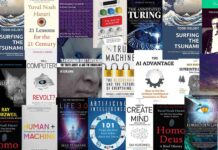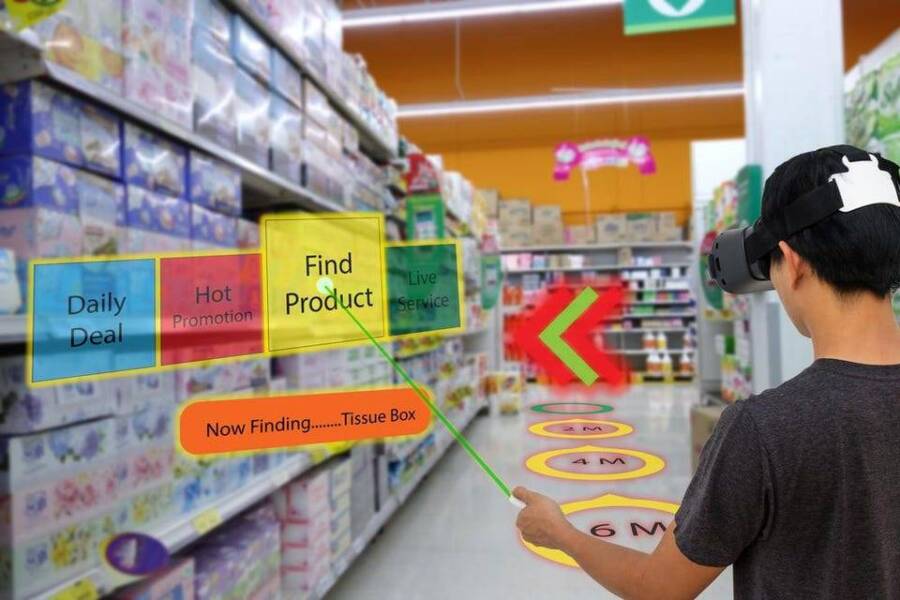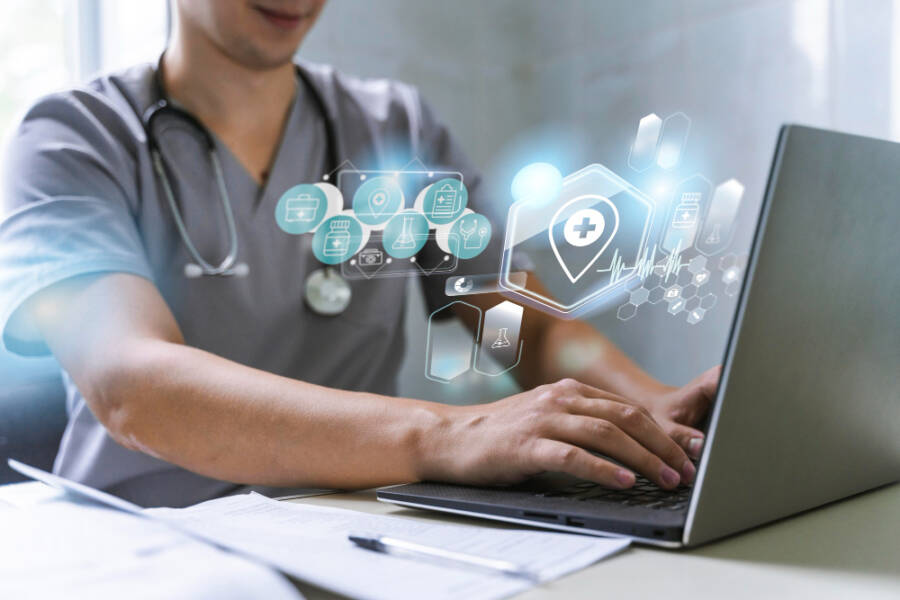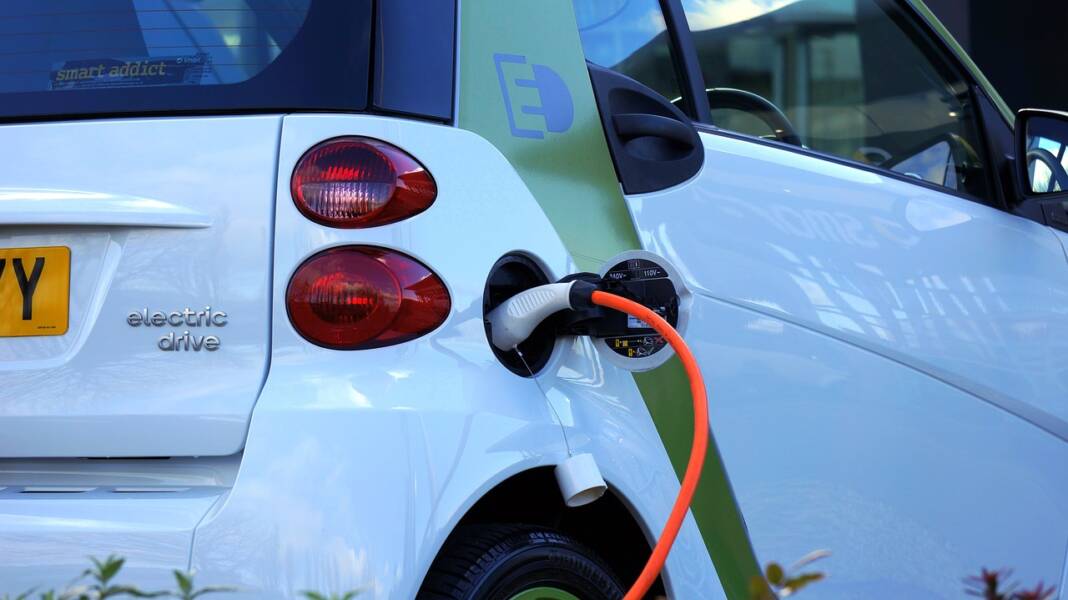A New Era of Disruption
Remember when smartphones felt revolutionary? In 2025, we’re living through a new wave of disruption that makes earlier tech leaps look quaint. Artificial intelligence is chatting with us like a friend, cars are starting to drive themselves, and doctors can fix genes the way a coder debugs software. These advances aren’t science fiction – they’re happening right now, touching how we work, travel, and stay healthy.
In this casual tour of 2025’s most disruptive innovations, we’ll explore real examples of cutting-edge tech in AI, general technology, and healthcare. No dense jargon here – just a conversation about mind-blowing trends shaping our world today. From AI “co-pilots” that help you write emails to gene therapies curing diseases, consider this your insider look at how tomorrow’s tech is already changing life as we know it.
So grab a coffee, and let’s dive into the exciting innovations redefining 2025. (Spoiler: The future is already here, and it’s pretty awesome.)
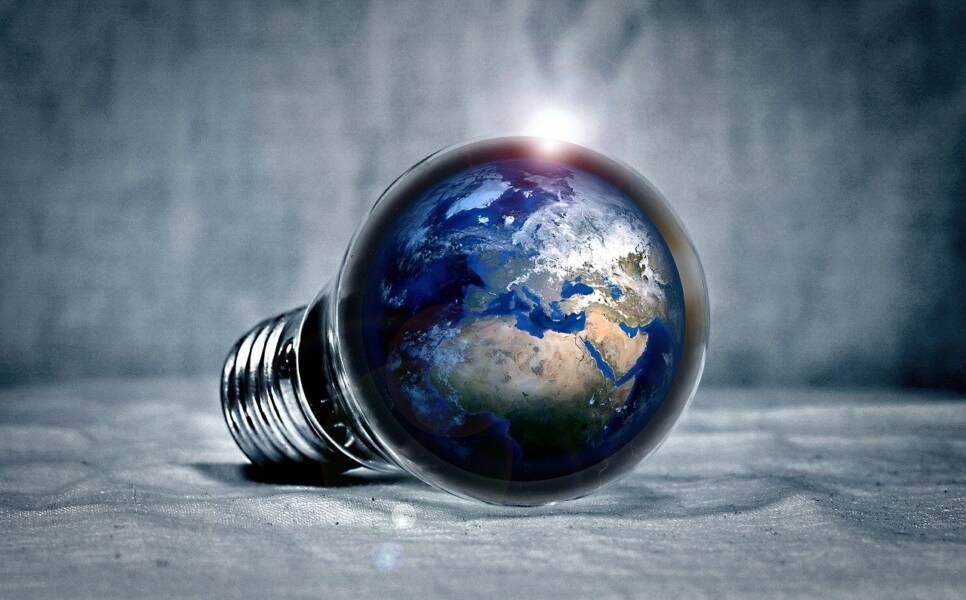
AI Everywhere: Your New Digital Co-Pilot
AI has jumped from research labs into our everyday lives – and it’s as commonplace as wifi. Thanks to advances in generative AI and machine learning, computers can now create content, have conversations, and even anticipate our needs. In late 2022, OpenAI’s ChatGPT surprised the world by handling natural language questions with striking fluency. Just two months after launch, ChatGPT hit 100 million monthly users, making it the fastest-growing consumer app in history. This AI boom has only accelerated: by 2025, about half of all organizations have adopted AI in at least one function.
What does this mean for you? Essentially, AI is turning into an everyday assistant – a “co-pilot” for your digital life. Writing an email? Gmail’s new “Help Me Write” feature can draft it for you. Stuck on a report or slideshow? Microsoft 365’s Copilot (powered by GPT-4 and other models) is integrated into Word, Excel, and PowerPoint to help brainstorm and polish your work. These tools feel less like software and more like helpful colleagues living inside our apps. They learn our style, anticipate needs (“Hey, it looks like you’re summarizing Q4 sales – want me to generate a chart?”), and can even inject some creativity. The democratization of AI means you don’t have to be a techie or have a supercomputer – AI help is accessible via your phone or laptop, often built right into the apps you already use.
Beyond the office, AI is personalizing entertainment and daily tasks. Music and video streaming services use AI to tailor recommendations just for you. Photography apps have AI that can enhance images or create art from scratch. Even customer service has changed: when you chat with support, there’s a good chance an AI is handling your request (at least at first). Far from the Hollywood trope of evil robots, the real AI revolution in 2025 is mostly about augmented human ability. It’s like having a tireless helper for every tedious digital chore – freeing us to be more creative and productive.
And it’s not just big companies pushing AI forward. Open-source models and fierce competition have made AI development more accessible and affordable. This means students, startups, and hobbyists are building cool AI apps, too. In short, AI has well and truly left the lab and is now everywhere – often invisible, but making life smoother. If you’ve ever said “Wow, Netflix really gets me” or used voice assistants to set a reminder, you’ve felt this quiet disruption. The bottom line: AI is no longer the future – it’s your everyday co-pilot in 2025, and it’s just getting started.
An Autonomous World: From Self-Driving Cars to Robot Helpers
We’ve talked about digital co-pilots – now let’s look at physical ones. Advances in sensors, machine vision, and robotics have kicked the door open to an autonomous world. Picture this: you call a taxi on your phone and a self-driving car pulls up with no human driver inside. In some cities, that’s already a reality. Companies like Waymo and Cruise have autonomous taxis cruising thousands of miles. In fact, by late 2024 Waymo was providing over 200,000 driverless rides per week in cities like San Francisco. These robo-taxis use a combination of lidar, cameras, and AI brains to navigate safely through busy streets. While they’re still mostly in pilot programs and limited areas, 2025 is a tipping point – regulators and the public are growing more comfortable with the idea of letting AIs take the wheel.
It’s not just cars. Autonomous drones are being used for everything from aerial photography to urgent medical deliveries. During the pandemic, some hospitals used drone services to ferry supplies and lab samples, reducing time and avoiding traffic. Farmers employ autonomous drones to survey crops every morning, a job once too expensive or tedious to do daily. Even indoors, robots are making their mark – warehouse bots zip around sorting packages, and some offices have robot “dogs” patrolling for security after hours. These advanced robots have improved “senses” (thanks to better sensors/cameras) and dexterity, enabling them to handle delicate or complex tasks that used to be strictly human.
In healthcare, surgical robots allow doctors to perform operations with precision through tiny incisions, making surgeries less invasive and recovery faster. And in the home, simple autonomous gadgets like robot vacuum cleaners have been joined by smart home robots that can map your house and even act as a mobile Alexa. It’s still early days for humanoid robots (the stuff of sci-fi), but limited-purpose bots are booming. Warehouses, for example, have embraced robotics to the point that an Amazon fulfillment center might have more robots than people working on the floor.
Crucially, these technologies are no longer prohibitively expensive. Sensors and computing power have gotten cheaper, so advanced robotics are scaling up. By 2025 we expect to see more driver-assist features in regular cars (many new cars practically drive themselves on highways now) and more pilot programs for driverless shuttles in cities, campuses, or retirement communities. These incremental steps are how disruptive tech enters mainstream life – gradually, then suddenly. One day you realize your new car hasn’t needed your input for the last 10 minutes of highway driving, or your local pizza place is testing drone delivery. The future of an autonomous world is arriving piece by piece, and it’s making daily tasks safer and easier. Buckle up – or rather, sit back – because the car of the near future might not need you to drive at all.
Connected Everything: IoT and Ambient Computing
Not too long ago, the internet mostly lived in our computers and phones. Now, everything is getting connected – from your refrigerator to the city streetlights. This Internet of Things (IoT) revolution means billions of devices embedded with sensors and connected through networks, all quietly collecting and exchanging data. In fact, experts estimate there will be 27 billion interconnected IoT devices by 2025. What are they all doing? Think of IoT as the digital nervous system of our world: tiny sensors monitor factory machines to predict maintenance needs, smart thermostats learn your schedule to save energy, and even trash cans in “smart cities” can signal when they’re full.
A key trend now is ambient computing, where technology blends so seamlessly into our environment that it becomes almost invisible. Your smart home, for instance, might notice you’ve left the lights on upstairs and politely turn them off to save power, without you saying a word. Or imagine you walk into your office and the room’s settings (lighting, temperature, even the digital picture frames) automatically adjust to your preferences – that’s ambient computing in action. Essentially, the environment is aware and responsive, thanks to networks of IoT sensors plus AI that orchestrates everything behind the scenes.
In 2025, IoT is especially booming in areas like health and fitness, transportation, and home automation. Wearable devices (from smartwatches to smart rings and socks) constantly measure health metrics and sync with apps or doctors. City planners use IoT data to optimize traffic flow – those connected traffic signals and street cameras can work together to reduce jams. And industrial IoT (sometimes called IIoT for industrial internet) is enabling “smart factories” where the assembly line essentially monitors itself, improving safety and efficiency.
Of course, connecting everything also brings challenges – notably security and privacy. Each smart device can be a potential target for hackers, so securing IoT networks is a top priority. And there’s the question of data: all these devices create mountains of data, which is both an opportunity (for insights and automation) and a responsibility (to handle sensitive information carefully). The good news is that alongside IoT, cybersecurity innovations are also advancing to keep our connected world safe.
For most of us, the IoT revolution just means life gets a bit more convenient gradually. We get used to finding our lost keys with a tracker tag, or the sprinkler system adjusting itself based on weather forecasts. Bit by bit, the physical world is merging with the digital realm. Imagine: in a few years, you might talk about some appliances the way we now talk about dial-up internet – with a nostalgic chuckle. Connected everything is here, and while you might not see it working, you’ll definitely appreciate the results in your smarter, smoother daily life.
Immersive Realities: When Virtual Meets Real Life
If you’ve tried an Oculus Quest or watched someone play Pokémon GO, you’ve had a taste of immersive tech. Augmented Reality (AR) and Virtual Reality (VR) used to be niche hobbies for gamers and geeks. But by 2025, these technologies – often grouped under Extended Reality (XR) – are expanding far beyond entertainment. The idea is simple: blur the line between the digital and physical worlds to create immersive experiences. And the use cases are multiplying as the tech improves and gets cheaper.
Let’s break it down: Virtual Reality means fully immersive digital worlds (you wear goggles and you’re “inside” a computer-generated scene), whereas Augmented Reality overlays digital info on the real world (think Snapchat filters or AR navigation that floats directions in front of your eyes). Mixed Reality is somewhere in between, blending interactive virtual objects into your real space. Extended Reality (XR) is an umbrella term for all these flavors.
What’s exciting in 2025 is how XR is being used. Sure, gaming is still huge – VR gaming rigs are more popular than ever. But now you’ll also find VR in professional training, education, and collaboration. Firefighters practice in VR simulations of burning buildings; surgeons train on virtual patients; and office workers have meetings in virtual conference rooms with avatars, which beats yet another video call. As for AR, it’s popping up in our everyday apps. For example, when shopping for furniture online, you can use AR to see how a couch would look in your living room. Or if you’re a tourist exploring a historic site, point your phone at a monument and an AR guide might show you how it looked 500 years ago.
Tech giants are heavily investing in this space. The much-anticipated Apple Vision Pro headset, announced in 2023, signaled Apple’s entry into mixed reality with a device that seamlessly layers virtual content into your real space (albeit at a steep price tag for early adopters). Meanwhile, devices like Meta’s Quest line and Microsoft’s HoloLens are iterating fast, getting lighter and more comfortable. The result: we’re inching closer to XR that you might use for hours without fatigue, which is key for wider adoption.
Even without fancy headsets, AR is accessible to anyone with a smartphone. That’s why you see kids playing AR games in the park or using AR filters on TikTok. Businesses are catching on too. Real estate firms use AR to give virtual home tours. Retailers have AR fitting rooms so you can “try on” outfits virtually. The metaverse – a buzzword a couple of years ago – is gradually taking shape not as one big virtual world, but as a collection of immersive experiences woven into daily life.
The statistics show rising interest: search volume for the term “extended reality” has more than doubled since late 2019. Revenue in the AR/VR sector is projected to hit tens of billions of dollars worldwide. More importantly, the novelty is wearing off and turning into genuine utility. Five years ago, VR was mostly seen as a gaming gadget; today it’s a legitimate tool for getting things done or experiencing something new. It’s pretty amazing that you can put on a headset and within seconds be “traveling” to another country or interacting with 3D objects as if they’re right in front of you. This immersive tech is disrupting how we learn, play, and connect, making the digital world feel a lot more like the real one – and sometimes even better.
Healthcare Revolution: Telehealth and Wearable Wellness
Perhaps the most profound disruptive innovations are the ones that literally save lives. The healthcare sector in 2025 is undergoing a tech-driven revolution, from how we see our doctor to how diseases are diagnosed and treated. One big shift is the rise and normalization of telehealth. If you’ve ever FaceTimed with a doctor or therapist, you know what we mean. The pandemic in 2020 forced healthcare providers to adopt virtual visits en masse – telehealth visits among Medicare recipients exploded from about 5 million annually to over 53 million during 2020. While in-person visits have resumed, telehealth has proven its value and is here to stay for the long run. It’s just so convenient to consult a doctor from your couch, and it opens access for people who live far from specialists. In 2025, it’s routine to do follow-ups or minor consults online, and many health insurance plans fully cover telemedicine sessions.
Hand-in-hand with telehealth is the boom in wearable health tech. We’re not just talking step counters. Modern wearables can continuously monitor heart rate, blood oxygen, sleep quality, and even detect irregular heart rhythms. The latest smartwatches have ECG sensors and temperature monitors; there are smart rings that track stress levels and even blood pressure. There’s even a baby’s smart sock that monitors an infant’s vitals and alerts parents of any issues – a level of insight unthinkable a decade ago. All this personal health data feeds into apps and can connect to healthcare providers. Imagine your watch alerting your doctor’s office automatically if it detects an arrhythmia – that’s not sci-fi, that’s now. These innovations mean preventive healthcare is getting a major upgrade. Doctors can catch warning signs earlier and individuals are empowered to take charge of their wellness with real data.
Another area being transformed is diagnostics and early disease detection. AI plays a big role here: machine learning algorithms can analyze medical images (like X-rays, MRIs, mammograms) with astonishing accuracy, flagging potential issues for doctors to review. For instance, AI tools can help radiologists spot tiny tumors or subtle signs of disease that might be hard for the human eye to catch. This augmented diagnosis doesn’t replace doctors, but it makes them more effective. The same goes for analyzing lab tests or even listening to a patient’s cough via a smartphone microphone – AI models are being trained to detect patterns that indicate illness early.
Digital health apps have proliferated, too. Mental health counseling via apps, AI chatbots that help cognitive behavioral therapy, medication reminder apps, you name it. In 2025, taking care of your health often involves a mix of smart devices, apps, and remote experts working together. It’s a far cry from the old model of waiting weeks for an appointment and spending 3 hours in a clinic for something that might be handled in a 15-minute video call.
All these healthcare innovations are not just cool tech – they’re making care more personalized and accessible. Rural patients can consult specialists in big cities without the travel. Busy parents can get pediatric advice at midnight via a telehealth app when their baby has a fever. People with chronic conditions can have continuous monitoring without living in a hospital. It’s a healthier, happier outlook: technology helping us live better lives by bringing healthcare to wherever we are.
Curing the Incurable: Gene Editing and Personalized Medicine
One of the most life-changing disruptive technologies of this era is happening at the tiniest scale – our genes. Gene editing tools like CRISPR have been buzzing in scientific circles for years, and now they’re finally making the leap to real-world treatments. In late 2023, the FDA approved the first therapy that uses CRISPR gene editing to treat sickle cell disease. This was a watershed moment: a treatment that actually edits the DNA in a patient’s cells to cure a disease, rather than just manage symptoms. The therapy (brand name Casgevy or exa-cel) essentially reprograms the patient’s bone marrow cells to produce healthy blood cells, offering relief for a condition that causes intense pain and organ damage. For patients who’ve suffered their whole lives, this kind of breakthrough is nothing short of miraculous.
Gene editing isn’t just limited to sickle cell. Researchers are exploring CRISPR-based treatments for other genetic disorders like cystic fibrosis, certain forms of blindness, and even HIV. And beyond CRISPR, the field of personalized medicine is exploding. This means treatments tailored to an individual’s genetic makeup. For example, cancer treatment is shifting from one-size-fits-all chemotherapy to personalized therapies that target the specific mutations in a patient’s tumor. Thanks to faster gene sequencing (it’s now cheap and quick to sequence a human genome), doctors can pick medicines that are most likely to work for you, avoiding a trial-and-error approach.
We’re also seeing advances in biotech like never before. mRNA vaccine technology, which gained fame with COVID-19 vaccines, is being applied to experimental vaccines for HIV, flu, and even cancer. These vaccines deliver genetic instructions to our cells, teaching the immune system to fight the disease – a fundamentally new approach that can be developed and tweaked faster than traditional methods.
Another exciting area is regenerative medicine. This includes using stem cells or bio-engineered tissues to repair or replace damaged organs. Scientists have made progress in lab-grown organs – for instance, growing miniature liver or kidney tissues that might one day be expanded into full transplantable organs. While that’s still in early stages, 3D printing is already being used to create custom prosthetics and even human tissue (like bio-printed skin for burn victims). It’s as disruptive as it sounds: the line between biology and technology is blurring.
One more fascinating trend is the use of AI in drug discovery. Traditionally, finding a new drug was like searching for a needle in a haystack, taking years and billions of dollars. Now, AI models can screen through vast libraries of chemical compounds and predict which ones might effectively target, say, a virus or a cancer cell. This speeds up the discovery process dramatically. In 2025, there are already a few drugs in trials that were identified with the help of AI algorithms – potentially bringing treatments to patients faster.
It’s important to note that these medical innovations, while promising, come with their own challenges. Ethical questions abound: if we can edit genes, should we edit embryos to eliminate disease? How do we ensure these breakthroughs reach everyone, not just the rich? Regulators are working hard to keep up with the pace of innovation to ensure safety and fairness. But optimism is warranted – the collaborative effort of global scientists, doctors, and technologists is steadily chipping away at diseases long deemed “incurable.” For the first time, it’s plausible to talk about curing genetic diseases or customizing treatments to each patient’s DNA. That’s a profound disruption of the status quo in medicine, one that gives hope to millions and could extend both the length and quality of our lives.
Clean and Green: Sustainable Tech Transforming Our Future
While AI and biotech often steal the spotlight, there’s another revolution quietly reshaping the world: clean technology. Faced with climate change and environmental challenges, innovators are coming up with disruptive solutions for energy, transportation, and sustainability. In 2025, we see an acceleration in the adoption of electric vehicles, renewable energy, and other green tech that promise to change the world (and maybe save it too).
Take electric vehicles (EVs) – once limited to quirky hybrids or high-end Teslas, they’re now everywhere. Major carmakers have rolled out affordable EV models, and many countries have incentivized buyers to go electric. Analysts predict that by the end of 2025, one in four new cars sold globally could be electric. In China, the world’s largest auto market, EV sales are actually expected to surpass gasoline car sales for the first time – a monumental shift. This disruption isn’t just about cool cars; it’s about cleaner air and a pivot away from fossil fuels. As battery technology improves, EV driving ranges have increased and charging times decreased, easing the “range anxiety” that once worried drivers. There’s also a boom in public charging infrastructure – it’s becoming as normal to see a charging station in a parking lot as a gas pump.
On the energy front, renewable power is surging. Solar and wind power are now often cheaper than coal or gas in many regions, which is a huge tipping point. Countries and corporations alike are investing heavily in renewable energy farms. We’re also hearing a lot more about energy storage – big batteries to store solar power overnight, for example, or new kinds of storage like flow batteries and even gravity-based systems. The goal is to smooth out the intermittent nature of renewables so they can truly replace fossil fuel plants.
Another disruptive player is green hydrogen. Hydrogen fuel, when produced with renewable energy (earning the moniker “green hydrogen”), could become a key piece of a zero-carbon energy puzzle. It’s seen as a way to decarbonize industries that are hard to electrify, like long-haul shipping or steel production. Investment in clean hydrogen has skyrocketed in recent years; global interest is so high that searches for “green hydrogen” have jumped ~1000% over five years. We’re even seeing hydrogen-powered trains – Germany debuted the first hydrogen passenger trains in 2022, capable of running 600+ miles without refueling. Plans are underway to convert thousands of diesel trains to hydrogen in the coming years, demonstrating how disruptive this tech could be to traditional transport.
Sustainability isn’t only about energy and cars. Smart grids and efficient appliances are cutting waste. Circular economy innovations aim to eliminate waste by recycling and reusing materials continuously (imagine truly recyclable electronics, or compostable packaging that eliminates plastic waste). And let’s not forget carbon capture – technologies that literally suck CO₂ out of the air. While still nascent and not yet widely scaled, there are working plants that pull carbon from the atmosphere and trap it underground, potentially reversing some effects of emissions.
The common theme? These disruptions target the biggest challenges of our time. They’re not just nice-to-have gadgets; they’re about sustaining life on Earth in the long run. Governments are on board too – policies like the U.S. Inflation Reduction Act of 2022 poured funding and tax incentives into clean tech, spurring the creation of hundreds of new companies in sectors like hydrogen and battery storage. It’s a massive mobilization of innovation.
For the average person, the clean tech revolution might show up as a solar panel on your roof, an electric car in your driveway, or simply lower electric bills because your utility gets cheaper power from wind farms. Or it could be felt in the air – literally, as cities slowly get less smoggy. It’s disruption at a societal level: changing how we power our homes and move around, with the promise of a healthier planet for future generations.
Conclusion: Embracing the Future Today
Disruptive innovations can be intimidating – they shake up the familiar. But as we’ve seen throughout 2025’s landscape of AI, technology, and healthcare, these breakthroughs are largely making life better, easier, and more exciting. We’re witnessing AI become a friendly helper, machines taking over dull or dangerous tasks, healthcare getting smarter and more personal, and a greener blueprint for growth. And the best part? You don’t need to be a tech expert to feel the benefits. They’re baked into the apps you use, the care you receive, and the environment around you.
Sure, there are challenges. We have to ensure AI is used ethically, protect privacy in an IoT world, make healthcare innovations affordable, and truly commit to sustainability. But human creativity and curiosity – the same forces driving these innovations – are also at work solving those challenges. The key is to stay informed and adaptable. By understanding what’s coming (or already here!), we can make the most of these disruptive tools and even have a say in how they evolve.
The world is changing fast, but it’s also incredibly fascinating. Ten years ago, who imagined chatting with an AI bot or having a gene-edited therapy cure a disease? Yet here we are. So as you step out into this transformed world, don’t fear the disruption – embrace it. These innovations hold the promise of a brighter future, and they’re inviting us all to be a part of it. After all, the story of technology isn’t about gadgets, it’s about people – how our lives are improved and what new possibilities we have. And in 2025, that story is reaching an exciting new chapter.
TechnologyHQ is a platform about business insights, tech, 4IR, digital transformation, AI, Blockchain, Cybersecurity, and social media for businesses.
We manage social media groups with more than 200,000 members with almost 100% engagement.














